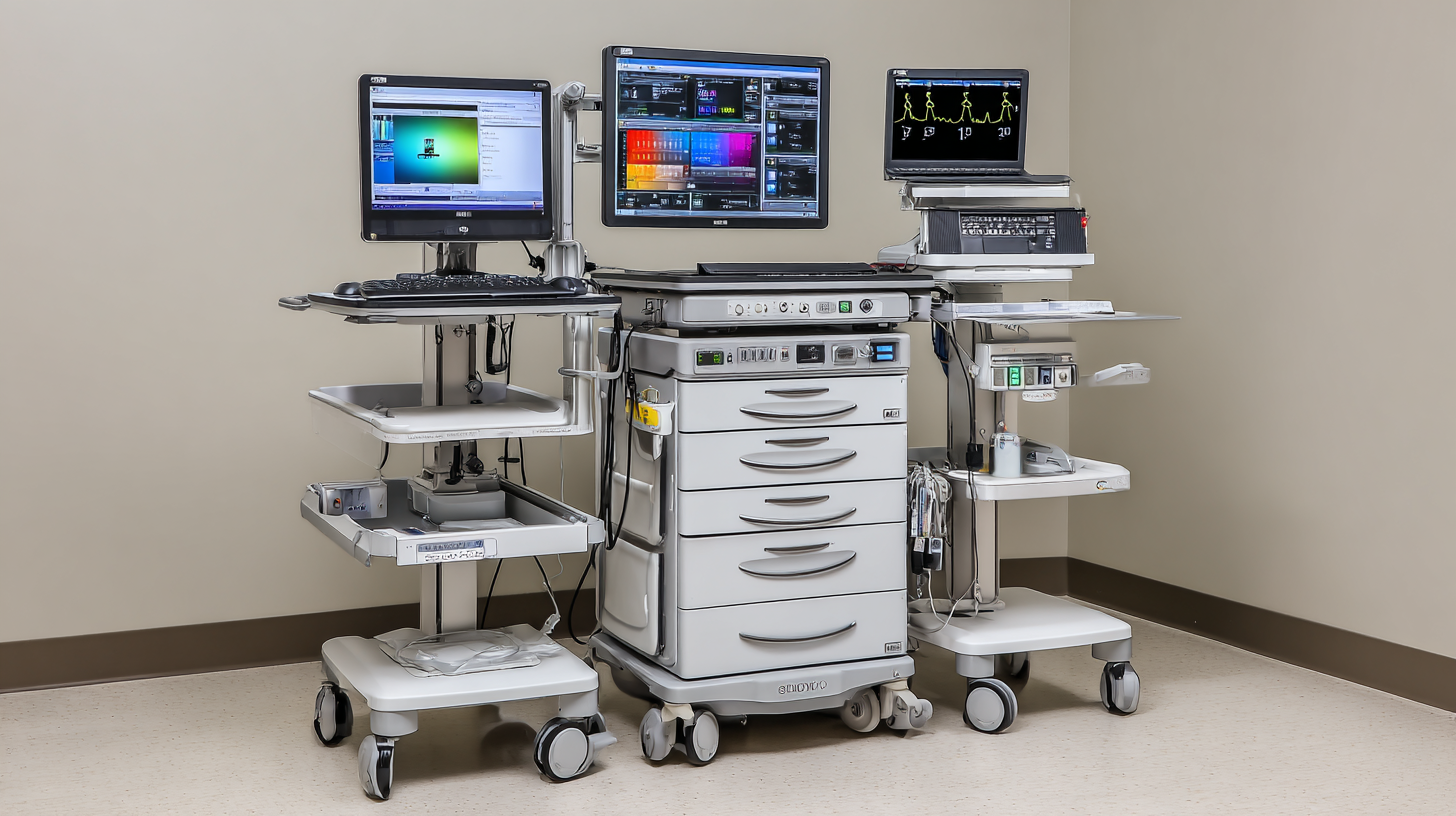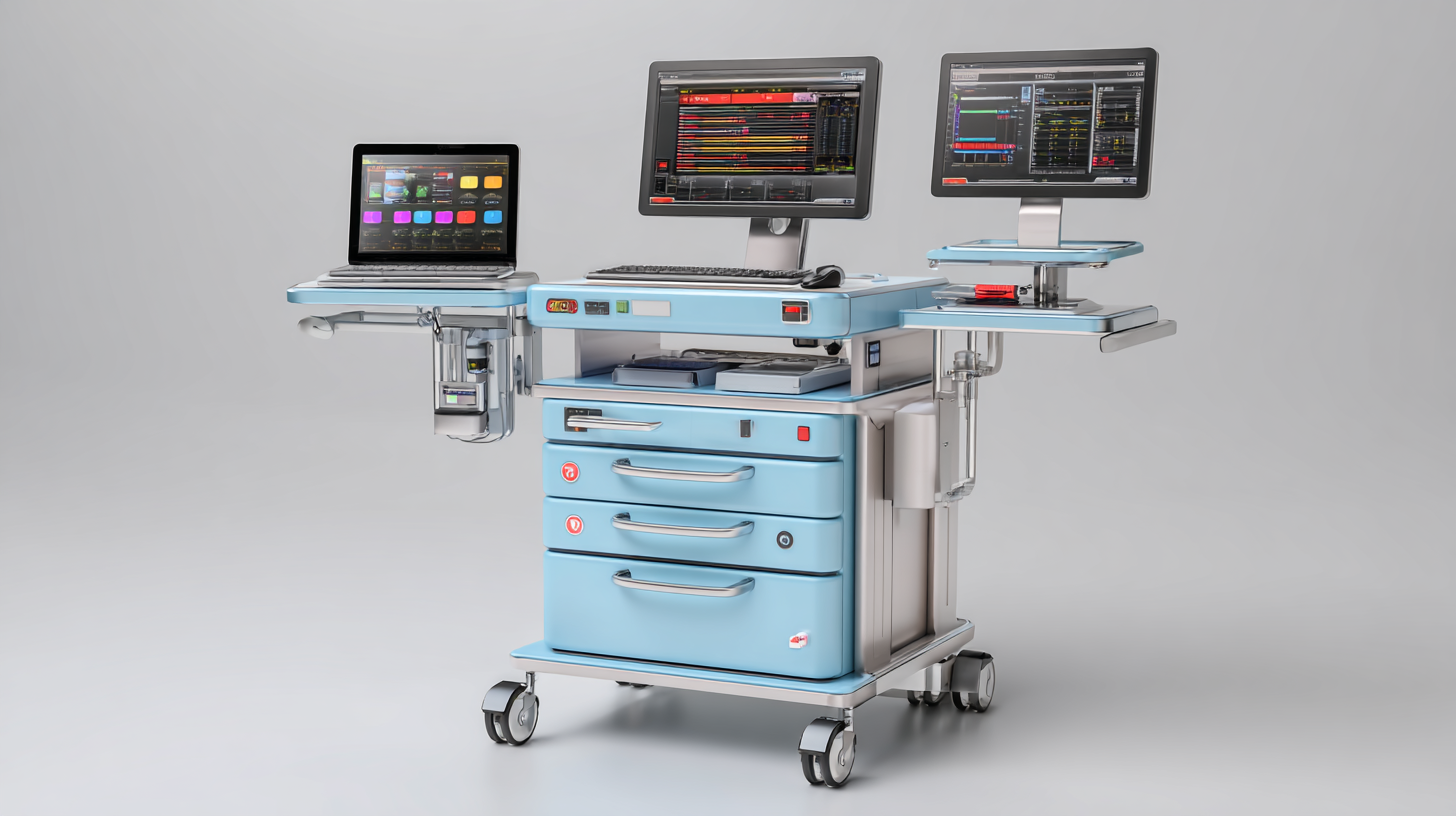Ultimate Guide to Choosing the Best Medical Computer Cart for Your Facility
In the rapidly evolving landscape of healthcare technology, the importance of selecting the right medical computer cart cannot be overstated. According to a report by MarketsandMarkets, the global market for medical computer carts is projected to reach $4.2 billion by 2025, driven by the increasing demand for efficient and mobile healthcare solutions. Medical computer carts have become essential tools in facilitating real-time access to patient information, enhancing workflow, and improving overall patient care. With a diverse range of models available, each boasting unique technical specifications and features, it is crucial for healthcare facilities to make informed decisions. This ultimate guide aims to demystify the process of selecting the best medical computer cart for your facility by exploring key product attributes, numerical metrics, and top recommended types to ensure optimal functionality and efficiency in your medical environment.

Key Features to Look for in a Medical Computer Cart
When selecting a medical computer cart for your facility, it's essential to focus on several key features that can enhance both functionality and patient care. With the increasing reliance on electronic health records (EHRs), a report from HIMSS Analytics indicates that 75% of healthcare organizations are now using mobile computing solutions to improve workflow efficiency. Hence, a robust and ergonomic design is vital for promoting user comfort and minimizing strain during prolonged use.
Additionally, mobility is a critical factor. Healthcare environments are dynamic, and carts should be equipped with features such as large, locking wheels and height-adjustable platforms. According to a study by the University of Minnesota, 68% of nurses report that mobility impacts their ability to provide timely care, highlighting the need for carts that can be easily maneuvered in crowded clinical spaces. Furthermore, the integration of security features like RFID locks can protect sensitive patient data, ensuring compliance with HIPAA regulations and fostering trust in digital health solutions. By focusing on these aspects, facilities can ensure their medical computer carts meet both the practical demands of healthcare professionals and the safety standards required for patient care.
Comparison of Key Features in Medical Computer Carts
Understanding Ergonomics: Enhancing Comfort for Healthcare Providers
When it comes to equipping healthcare facilities with medical computer carts, ergonomics is a crucial consideration. Ensuring the comfort and efficiency of healthcare providers directly impacts patient care quality. An ergonomically designed cart allows staff to maintain proper posture and reduces the risk of strain or injury during long shifts. This is particularly important in fast-paced environments, where providers frequently move between tasks and locations.
**Tips:** Choose a medical computer cart with adjustable height features. This allows users to customize the cart to their specific needs, promoting better posture and minimizing discomfort. Additionally, consider carts with swivel wheels for enhanced maneuverability. This can significantly reduce physical strain as healthcare workers navigate through tightly packed spaces.
Furthermore, look for carts that provide ample storage for essential equipment and supplies. Having resources within easy reach not only enhances productivity but also helps reduce repetitive bending and reaching, which can lead to injury over time. By prioritizing ergonomic design in your selection process, you create a more comfortable and effective working environment for healthcare providers.
Ultimate Guide to Choosing the Best Medical Computer Cart for Your Facility - Understanding Ergonomics: Enhancing Comfort for Healthcare Providers
| Feature | Importance | Recommended Specifications |
|---|---|---|
| Adjustable Height | Reduces strain on healthcare providers | Range of 30" to 42" |
| Weight Capacity | Supports various medical equipment | Minimum 100 lbs |
| Mobility | Ease of transport within facilities | Lockable casters |
| Surface Material | Durability and cleanliness | Antimicrobial laminate |
| Cable Management | Prevents tripping hazards | Integrated cable trays |
| Storage Solutions | Organizes tools and supplies | Drawers and compartments |
| Ease of Cleaning | Maintains hygiene standards | Smooth surfaces |
Top Medical Computer Cart Brands Reviewed: A Quick Comparison
When it comes to selecting the best medical computer cart for your facility, understanding the options available can significantly streamline your decision-making process. The market is filled with various brands, each offering unique features tailored to different healthcare environments. For instance, brands like Rubbermaid and Arnold present user-friendly designs that emphasize mobility and ergonomics, making them ideal for dynamic hospital settings where quick access to patient information is crucial.
In contrast, Medline and CARTS also focus heavily on durability and customization, catering to specialized departments such as operating rooms or intensive care units. Their carts often come equipped with advanced storage solutions and can be outfitted with necessary technology like telehealth capabilities. By comparing these top brands, you can identify which medical computer cart best aligns with your facility's needs, ensuring efficiency, safety, and comfort for both patients and healthcare professionals.

Budgeting for Medical Computer Carts: Cost vs. Value Considerations
When budgeting for medical computer carts, it is essential to balance cost with long-term value. According to a recent report from the Healthcare Information and Management Systems Society (HIMSS), healthcare facilities that invest in high-quality medical carts report a 15% increase in operational efficiency. This enhancement not only improves patient care but also reduces the time spent on administrative tasks, allowing healthcare providers to focus more on direct patient interactions.
Cost considerations should also take maintenance and longevity into account. A study from the Journal of Healthcare Engineering highlighted that facilities that opted for more robust models experienced lower maintenance costs, saving an average of 20% over five years. With the average lifespan of a medical computer cart being around 5-7 years, choosing quality over the lowest initial price can lead to significant savings and enhanced reliability, ultimately providing better service to both staff and patients.
Prioritizing value rather than merely initial costs can help facilities create a more efficient and effective healthcare environment.
Essential Accessories for Optimizing Your Medical Computer Cart Setup
When setting up a medical computer cart, optimizing functionality with the right accessories is crucial for enhancing workflow and ensuring patient safety. According to a report by the Healthcare Information and Management Systems Society (HIMSS), over 60% of healthcare professionals believe that specialized accessories significantly improve the usability of medical carts. Essential accessories, such as antimicrobial keyboard covers, help maintain hygiene in clinical environments, addressing the high infection rates associated with hospital-acquired infections (HAIs).

Additionally, power management solutions, such as surge protectors and multiple AC outlets, are vital to avoid disruptions during patient care. Research from the American Hospital Association indicates that efficient power management can reduce downtime caused by equipment failure by up to 30%. Moreover, incorporating adjustable monitor arms can enhance ergonomics for healthcare workers, leading to a reported 20% decrease in musculoskeletal injuries. By equipping medical computer carts with these essential accessories, facilities can ensure a more effective and safer environment for both patients and healthcare providers.
